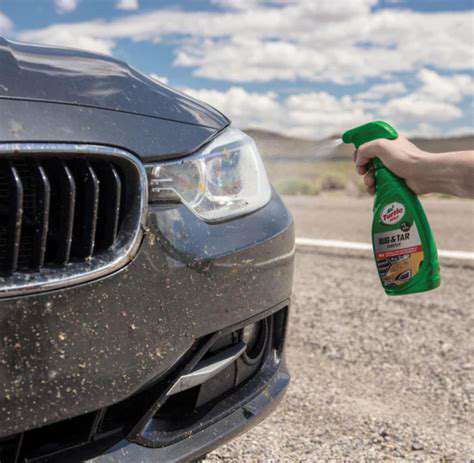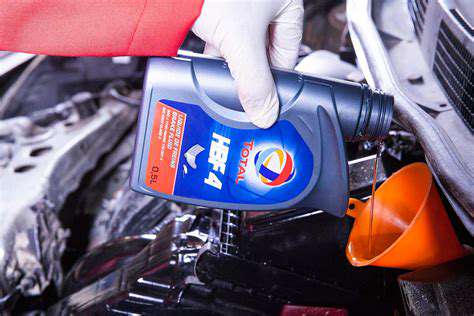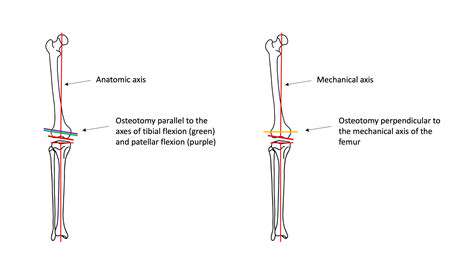DIY Odor Elimination Techniques for Budget-Conscious Drivers
Baking Soda Magic
Baking soda, a pantry staple, is a surprisingly effective odor absorber. Sprinkle a generous amount of baking soda into open containers, like a small bowl or a shallow dish, within your car. The baking soda will absorb odors over time, much like a sponge. For best results, leave the baking soda in your car for a few days and then vacuum it out. This method is gentle on your car's interior and won't damage any surfaces, making it a safe and simple way to tackle those lingering smells.
For particularly stubborn odors, consider placing open containers of baking soda in different areas of your car, such as the footwells, glove compartment, and center console. The more surface area exposed to the baking soda, the more effective it will be at absorbing odors. Remember to replace the baking soda periodically, especially if the odor is persistent.
Activated Charcoal Action
Activated charcoal is another excellent natural odor eliminator. Its porous structure effectively traps odor-causing molecules, making it ideal for absorbing unpleasant smells. Place a small bag or container of activated charcoal in your car, ideally in areas where odors tend to linger. The charcoal will gradually absorb the odors, leaving your car smelling fresh and clean.
You can purchase activated charcoal in various forms, such as small bags or blocks. It's also a cost-effective option compared to commercial odor eliminators, making it a budget-friendly choice for maintaining a fresh car interior. However, be mindful that while effective, activated charcoal isn't a quick fix; it takes time for the charcoal to absorb the odor completely.
Vinegar's Versatile Power
White vinegar is a versatile cleaning agent and a surprisingly effective odor neutralizer. Its acidic nature helps to break down odor molecules, leaving your car with a fresh scent. Mix equal parts water and white vinegar in a spray bottle. Spray the mixture on affected areas of your car's interior, focusing on upholstery, carpets, and even the dashboard. Allow the solution to air dry completely before driving.
The vinegar smell dissipates relatively quickly, leaving behind a clean scent. To further enhance the pleasant fragrance, you can add a few drops of essential oil to the vinegar solution. However, avoid using too much vinegar, as it can potentially damage certain materials over time. Always test the solution on a small, inconspicuous area first to ensure compatibility.
Essential Oil Enchantment
Essential oils offer a natural and fragrant way to eliminate odors and leave your car smelling pleasant. Choose essential oils known for their refreshing properties, such as lemon, peppermint, or lavender. Add a few drops of essential oil to a small bowl of water and place it in your car. The gentle fragrance will permeate the car, effectively masking unpleasant smells.
Ventilation and Fresh Air
Sometimes, the best way to eliminate odors is to simply improve ventilation. Open your car windows whenever possible to allow fresh air to circulate. This helps to dilute and remove lingering odors. Additionally, using a car air freshener, while not a DIY technique, can help to mask odors temporarily or provide a more immediate, pleasant scent.
Consider parking in well-ventilated areas whenever possible to maximize fresh air exposure. Combining this approach with other DIY techniques can significantly enhance the effectiveness of odor elimination efforts and achieve a more substantial and lasting result.
Advanced Odor Removal Methods for Persistent Smells
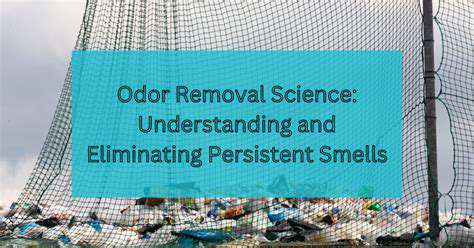
Odor-Absorbing Materials
Utilizing specialized odor-absorbing materials is a crucial aspect of effective odor removal. These materials, often composed of activated charcoal, zeolites, or other porous substances, work by trapping odor molecules within their structure. The key is selecting materials specifically designed for the type of odor being addressed. For instance, activated charcoal is excellent at absorbing various volatile organic compounds, while zeolites excel at removing moisture-related odors.
Choosing the appropriate material is critical. Different materials have varying capacities for absorbing different types of odors. Proper selection ensures that the chosen material effectively targets the specific odor source and prevents the odor from lingering. Consider the source of the odor when making your selection to maximize its effectiveness.
Enzymatic Odor Eliminators
Enzymatic odor eliminators offer a biological approach to odor removal. These products contain enzymes that break down organic compounds responsible for unpleasant smells. This method is particularly effective for odors originating from biological sources such as food spills, pet accidents, or mold. By targeting the root cause of the odor, enzymatic treatments often provide a more sustainable and long-lasting solution.
Enzymes work by targeting the molecules causing the odor and breaking them down into less harmful substances. This approach often leaves no lingering odor and helps prevent odor recurrence. Enzymatic odor eliminators are a gentler approach, minimizing potential environmental impact compared to some chemical methods.
Professional Odor Removal Services
In situations involving complex or persistent odors, professional odor removal services can provide expert solutions. These services utilize advanced techniques and specialized equipment to address the root cause of the issue. They often go beyond standard home remedies by identifying and treating underlying problems like mold, mildew, or sewage backups.
Professional odor removal services can pinpoint the source of the odor. They often utilize advanced equipment and techniques to identify and address the source, ensuring comprehensive and long-lasting odor control. This is especially beneficial for stubborn odors that persist despite home remedies.
Air Purification Systems
Air purification systems play a critical role in maintaining a fresh and odor-free environment. These systems, including air purifiers with activated carbon filters and HEPA filters, effectively remove airborne odor molecules from the air. Air purifiers with multiple filtration stages can significantly improve indoor air quality by reducing contaminants and unpleasant scents. This is a proactive approach to odor control, preventing odors from building up in the first place.
Regular maintenance and replacement of filters in air purification systems are essential. Maintaining optimal performance ensures these systems effectively capture and remove odors. Choosing the right system based on the size of the area and the type of odors present will optimize the effectiveness of this method.
Maintaining a Fresh Car Interior: Prevention is Key
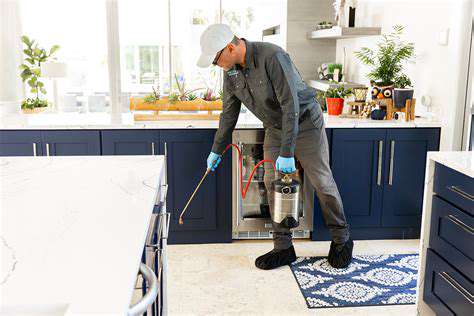
Cleaning and Maintaining Interior Fabrics
Regularly cleaning your car's interior fabrics is crucial for preserving their appearance and preventing the buildup of dirt, stains, and odors. This involves more than just a quick wipe-down. Thorough cleaning, including vacuuming, spot treating, and sometimes professional detailing, is key for a lasting fresh look. Proper cleaning methods depend on the type of fabric, whether it's leather, cloth, or synthetic. Using the wrong products can damage the fabric, so always check the manufacturer's recommendations.
Vacuuming removes loose dirt and debris, while spot treatment addresses any spills or stains promptly. This preventative measure minimizes the risk of permanent damage and keeps your car smelling fresh. Remember to always test cleaning solutions on an inconspicuous area first to ensure compatibility with the fabric.
Protecting Upholstery from Stains
Preventing stains is far easier than removing them later. Take proactive steps to shield your car's upholstery from spills, food crumbs, and other potential contaminants. Using protective sprays or seat covers can significantly reduce the risk of staining. Keeping spills contained and acting quickly to blot up any accidents is vital for maintaining a spotless interior.
Keeping drinks and food out of the vehicle is a good habit to adopt. This will help to prevent spills and messes that may permanently stain your upholstery.
Properly Cleaning Leather Interiors
Leather interiors require special care to maintain their luxurious appearance and softness. Using harsh chemicals or abrasive cleaners can damage the delicate leather surface. Choosing the right leather cleaner and conditioner is essential for preserving its integrity. Always follow the manufacturer's instructions for leather care to avoid any potential harm to the leather.
Gentle cleaning methods, including wiping with a damp cloth and mild leather cleaner, are vital for maintaining the leather's natural sheen and preventing cracking or drying. Leather conditioners replenish moisture and keep the leather supple.
Addressing Odors in Your Car
Unpleasant odors can quickly diminish the pleasant experience of being in your car. Identifying the source of the odor is the first step in resolving it. Food spills, pet accidents, or even lingering smoke can all contribute to a musty or unpleasant smell. Using odor eliminators and air fresheners can help mask odors, but addressing the root cause is crucial for a long-term solution.
Regular Vacuuming and Dusting
Regular vacuuming and dusting remove loose dirt, dust, and debris that accumulates in the interior. This simple task helps to maintain a clean and fresh environment. Regular vacuuming helps prevent the buildup of dust and dirt. This helps to keep the interior clean and prevents the accumulation of dust and allergens. This simple step contributes significantly to the overall cleanliness and freshness of the vehicle.
Maintaining Carpets and Mats
Maintaining clean carpets and floor mats is essential for a fresh interior. Regular vacuuming, spot cleaning, and professional cleaning, when needed, can keep these areas looking their best. Keeping your floor mats clean prevents the buildup of dirt and grime that can affect the overall look and feel of your car. Protecting floor mats with protective coverings or regularly cleaning them helps to preserve their condition and maintain the car's interior cleanliness.

